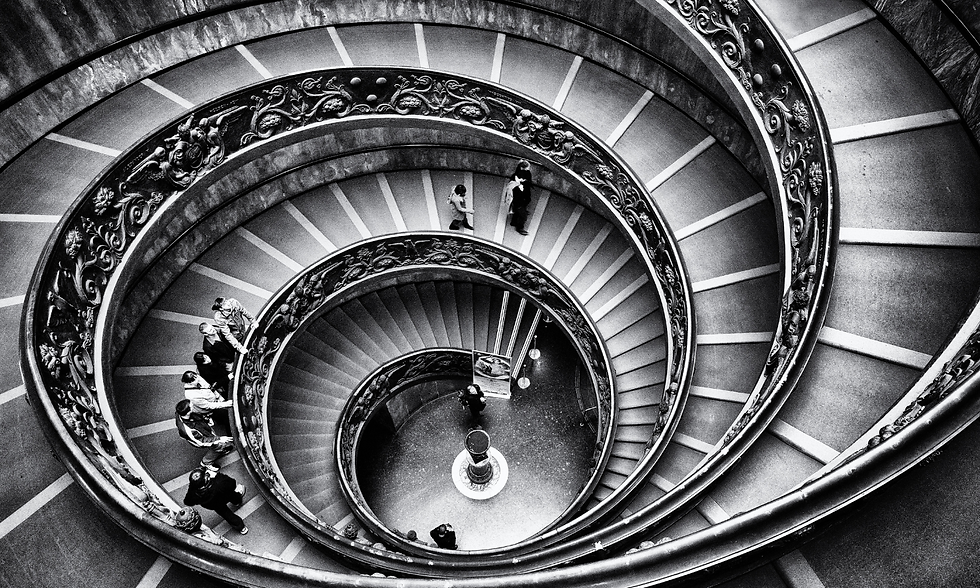Breaking the Rules: When and How to Bend Design Conventions
- Desixn Wrap

- Dec 2, 2024
- 4 min read
Updated: May 10
“Learn the rules like a pro, so you can break them like an artist.” - Pablo Picasso
Let’s admit it—design rules can feel like a warm hug. They guide us, keep our work structured, and ensure everything looks polished and professional. But here’s a little secret: the magic often happens when you decide to toss the rulebook out the window. Some of the most iconic designs in history weren’t created by following the guidelines—they were born from breaking them.
Rules are a safety net, but where’s the fun in staying safe all the time? Let’s take a stroll down the rebellious side of design and explore how breaking conventions can lead to brilliance.
The Foundation of Rules
Before you grab your metaphorical sledgehammer, let’s take a moment to appreciate the purpose of design rules. They exist for a reason, after all. The golden ratio, grids, and alignment principles all work together to ensure harmony and usability. Imagine a website where the text runs diagonally across the screen or a poster where you can’t tell the headline from the body text.
Rules are what make designs functional. They bring order to creativity and help convey messages clearly. Mastery of the basics is where every great designer starts. Once you know how the game is played, you can make up your own rules.

The Joy of Breaking Conventions
Breaking rules isn’t about chaos; it’s about intention. Think of it as jazz in the design world. You start with a melody everyone knows, then riff off it to create something entirely your own.
Take asymmetry, for instance. While symmetry offers balance, asymmetry adds energy. Think of a website with a bold image on one side and a small cluster of text on the other. It’s unexpected, dynamic, and impossible to ignore.
Then there’s color. Rules tell us to stick to complementary tones or safe palettes, but some of the most striking designs come from clashing hues. Neon pink with lime green? Why not! When done thoughtfully, breaking color rules can evoke strong emotions and grab attention in ways that a neutral palette never could.
Typography is another playground for rebellion. Who says all the text has to be the same size or perfectly aligned? Oversized letters mixed with delicate fonts can create a sense of drama that stops viewers in their tracks.
“Good design is about making something memorable, not necessarily beautiful.” – David Carson

The Risk of Rule-Breaking
Of course, breaking rules isn’t always smooth sailing. There’s a fine line between bold and bewildering. A design that’s too chaotic can confuse or alienate the audience. The trick lies in knowing your audience and understanding the purpose of your design.
Take, for example, a luxury brand’s logo. If you push the boundaries too far, you risk losing the elegance and trust that the brand embodies. Similarly, a rebellious layout on a website might look cool, but if users can’t figure out how to navigate it, you’ve lost them.
Breaking rules works best when it enhances the message rather than detracts from it. It’s a balancing act—push just enough to stand out without losing the plot.
Iconic Rule-Breakers
History is filled with examples of designers who dared to defy conventions and left a lasting mark. Apple’s iPod silhouette ads, for instance, broke the mold with their bold, clashing colors and stark black figures. At the time, tech ads were predictable and product-focused. Apple turned the focus onto people and movement, creating something unforgettable.
Nike’s “Just Do It” campaign is another rule-breaking gem. Minimal visuals, bold type, and a message that didn’t sell a product but an attitude—it redefined how ads could connect with audiences.
And then there’s David Carson, a designer who threw traditional magazine layouts out the window. His work often ignored readability norms entirely, yet it captured the chaotic energy of the times, making each page feel like a piece of art.
“Don’t be afraid to take a big step if one is indicated. You can’t cross a chasm in two small jumps.” – David Lloyd George


Where to Start with Rule-Breaking
If you’re ready to unleash your inner design rebel, start small. Experiment with one element at a time. Maybe it’s an asymmetrical layout for your next project or a daring color combination that you’ve been itching to try. Look at art, architecture, and even nature for inspiration—rule-breaking isn’t confined to design alone.
Most importantly, test your ideas. Get feedback. Sometimes what feels groundbreaking to you might not resonate with others, and that’s okay. Every risk teaches you something new.
Wrapping It Up
Breaking design rules isn’t about being reckless; it’s about pushing boundaries with purpose. It’s how you turn ordinary ideas into extraordinary ones and make your work unforgettable.
So, here’s your permission slip to step outside the lines. Learn the rules, master them, and then, when the moment’s right—break them beautifully.


